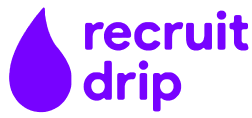In today's tough job market, it's always hard for companies to find and hire the best people. To get around this problem, recruiters and HR profesionals are always looking for new ideas, strategies, and ways to improve the way they hire people. In this piece, we'll look at some of the most important things that make recruitment work, as well as the latest trends and ideas that are changing the field.
Data and Sources
We will use a variety of data sources and business reports to get a full picture of how successful recruitment is. Some of these sources are:
1. Society for Human Resource Management (SHRM): SHRM is a professional group for HR workers that is known all over the world. Their studies and publications give useful information about trends, strategies, and best practices in recruitment.
2. LinkedIn Talent Solutions: As the most popular platform for professional networking, LinkedIn has a lot of information and study on how to find and hire talented people. Their annual Global Talent Trends study and Talent Insights platform give useful information about how the job market is changing.
3. Deloitte's Human Capital Trends Report is an annual report that gives a full picture of how the world of work is changing, including how to find and handle talent. Their study shows how new technologies and approaches are changing the future of hiring.
Insights for Recruitment Success
1. Workplace branding: If you want to attract and keep top talent, you need to have a strong workplace brand. A SHRM study found that 75% of people who are looking for work think about an employer's brand before they apply for a job. To attract good candidates, organizations should focus on getting the word out about their unique value proposition, company culture, and chances for growth.
2. Candidate Experience: A good candidate experience can have a big effect on how well a job is filled. According to the Global Talent Trends study from LinkedIn, 83% of candidates would think about turning down a job offer after a bad interview. Creating a good candidate experience requires streamlining the application process, giving comments quickly, and making sure communication is clear.
3.Data-Driven Recruitment: Hiring processes can be made better by using data and statistics. HR teams can use data to find talent pools, figure out if a candidate is a good fit, and measure how well their recruitment tactics are working. The Talent Insights site on LinkedIn gives useful information based on data about the demographics of talent, skills gaps, and market trends.
Strategies for Recruitment Success
1. Diversity and Inclusion: Embracing diversity and making sure everyone feels welcome at work is not only the right thing to do, but it also helps with recruits. Organizations that value diversity are more likely to be able to hire the best people. McKinsey says that different teams are 35% more likely to do better than teams that are all the same.
2.Talent Pipelining: To stay ahead of the competition, businesses should build and care for talent streams. This means getting to know potential candidates even before there are specific work openings. By talking to idle candidates and keeping them up to date on future job openings, companies can cut down on the time it takes to hire and get top talent quickly.
3.Technology and automation: The job market is changing quickly, and technology is a key part of making things run more smoothly. Applicant tracking systems (ATS), video questioning platforms, and AI-powered resume screening tools are just a few examples of new technologies that can make recruitment more efficient and effective.
Innovations in Recruitment
1. AI: AI is changing the way people are hired by automating repetitive chores, making it easier to screen candidates, and giving data-driven insights. Chatbots that are driven by AI can talk to candidates, answer their questions, and give them personalized suggestions. AI can also help find hidden biases in the hiring process. This makes hiring more fair and open to everyone.
2. Virtual and Augmented Reality (VR/AR): VR/AR technologies are changing how candidates are evaluated and how they are brought on board. AR-based onboarding tools give new hires immersive experiences. Virtual job simulations let people try out real-life work situations. These technologies make people more engaged, lower costs, and help businesses make better hiring choices.
3. Gamification is the process of adding game elements to the hiring process so that candidates are more interested and the process is easier to evaluate. Interactive challenges, quizzes, and online exercises can be used to test a candidate's skills and see if they fit in with the company's culture. They can also make the process more fun. Gamification can also help find people who are creative and good at solving problems.
To be successful at recruiting, you need to use a mix of thoughts, strategies, and new ideas. Focusing on workplace branding, candidate experience, data-driven recruitment, diversity and inclusion, and taking advantage of the latest technological advances can help companies find, connect, and hire the best people. Staying up to date on industry trends and embracing new ways of doing things will help companies do well in the constantly changing world of recruitment.
General
Unlocking Recruitment Success: Insights, Strategies, and Innovations
Read Our Blogs
Revolutionize your hiring process with Recruitdrip


